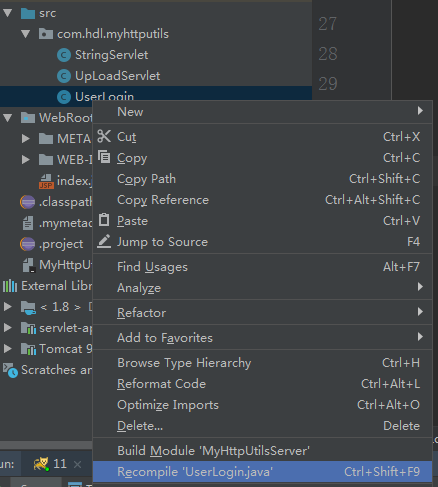

AEM is a Java-based platform and Maven is the standard way to manage code for an AEM project.
#Aem recompile jsp install#
Install Apache MavenĪpache Maven is a tool to manage the build and deploy procedure for Java-based projects. Here, the -X are JVM options and -D are additional framework properties, for more information, see Deploying and Maintaining an AEM instance and Further options available from the Quickstart file. Below is an example of the sample command: $ java -Xmx2048M -Xdebug -Xnoagent piler=NONE -Xrunjdwp:transport=dt_socket,server=y,suspend=n,address=30303 -jar aem-author-p4502.jar -gui -r"author,localdev" sh) depending on your local operating system flavor. Using command lineĪn alternative to double clicking the JAR file is to launch AEM from the command line or create a script (. Rarely do you need to run both simultaneously on a local setup. This starts the Publish instance, running on port 4503 on the local computer.ĭepending on your development machine’s hardware, it may be difficult to have both an Author and Publish instance running at the same time.

This starts the author instance, running on port 4502 on the local computer.ĭouble-click the aem-publish-p4503.jar file to install the Publish instance. Double-click the aem-author-p4502.jar file to install the Author instance.Add a copy of the license.properties file beneath the /publish directory. Make a copy of the QuickStart JAR, rename it to aem-publish-p4503.jar and place it beneath the /publish directory. Add the license.properties file beneath the /author directory. Rename the QuickStart JAR to aem-author-p4502.jar and place it beneath the /author directory. Create a folder structure on your computer like the following:.


Setting up a local development environment is the first step when developing for Adobe Experience Manager or AEM. Development with Eclipse IDE, CRXDE Lite, Visual Studio Code, and IntelliJ are discussed. Covers important topics of local installation, Apache Maven, integrated development environments and debugging/troubleshooting. Guide to setting up a local development for Adobe Experience Manager, AEM. Set up a Local AEM Development Environment


 0 kommentar(er)
0 kommentar(er)
